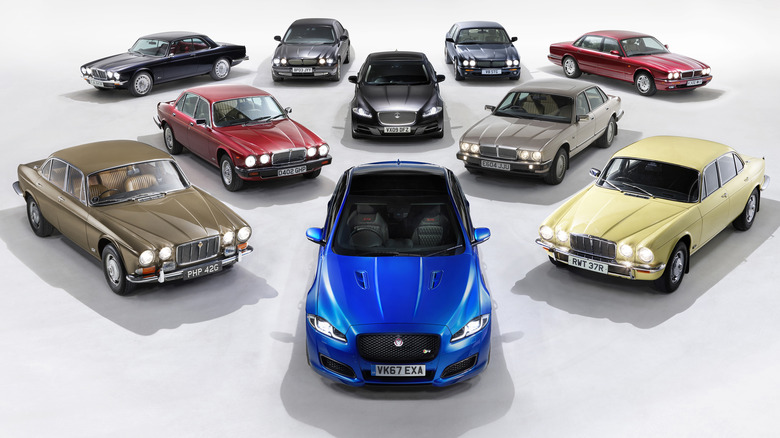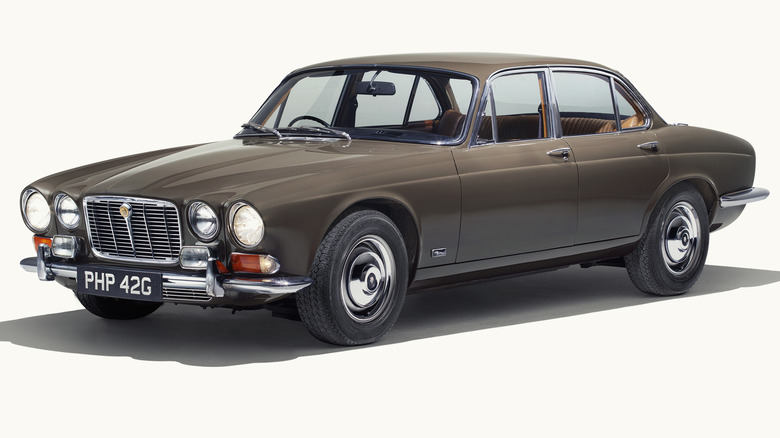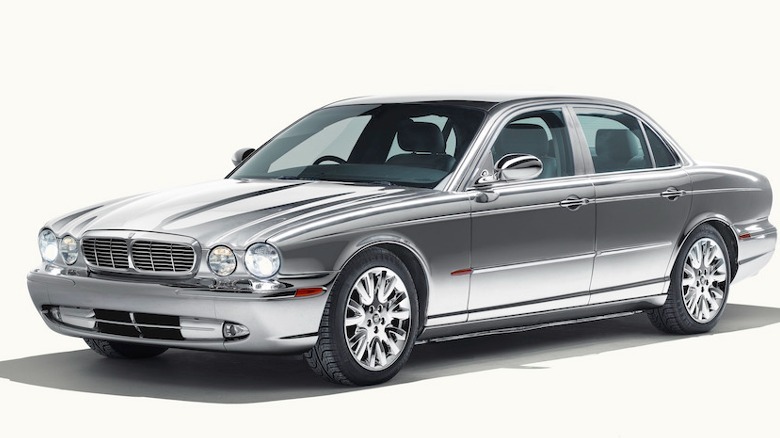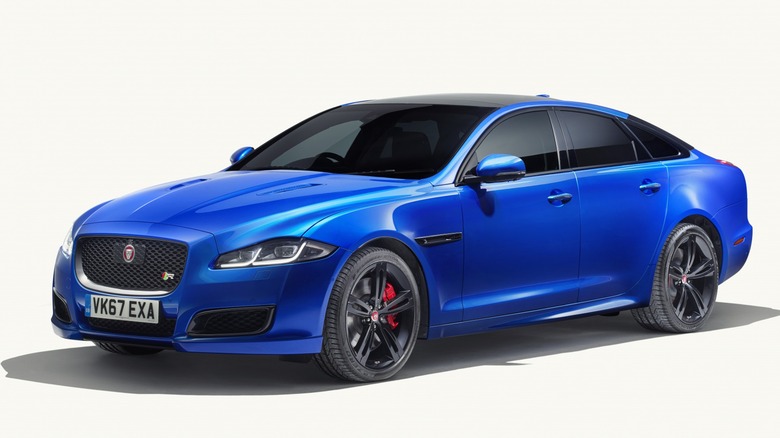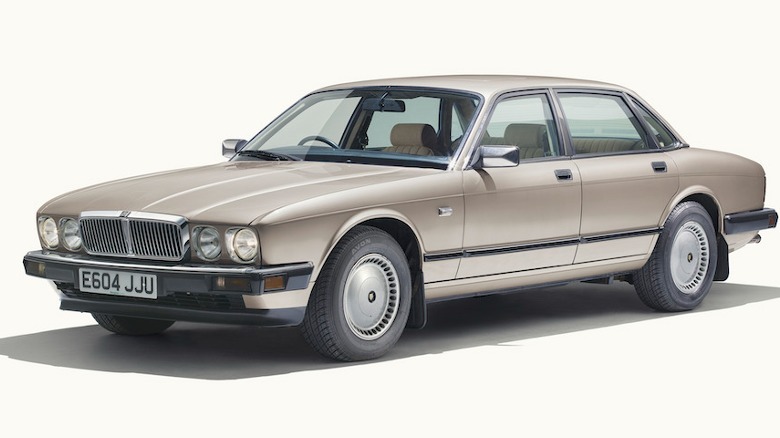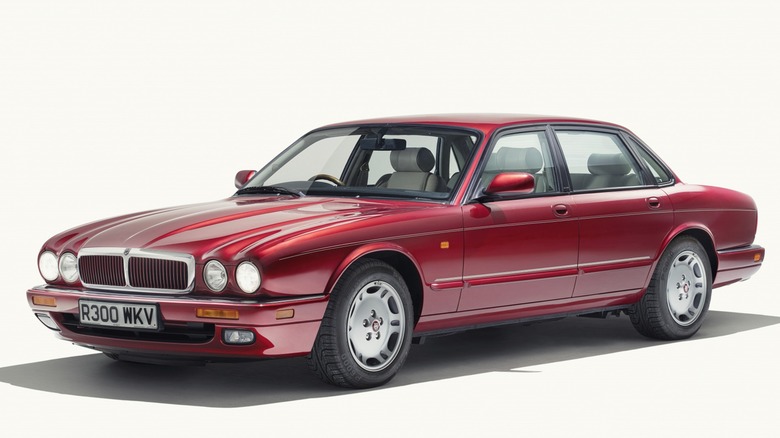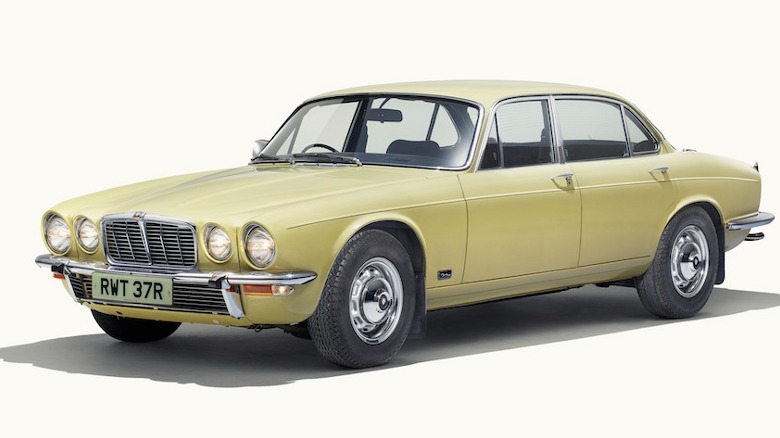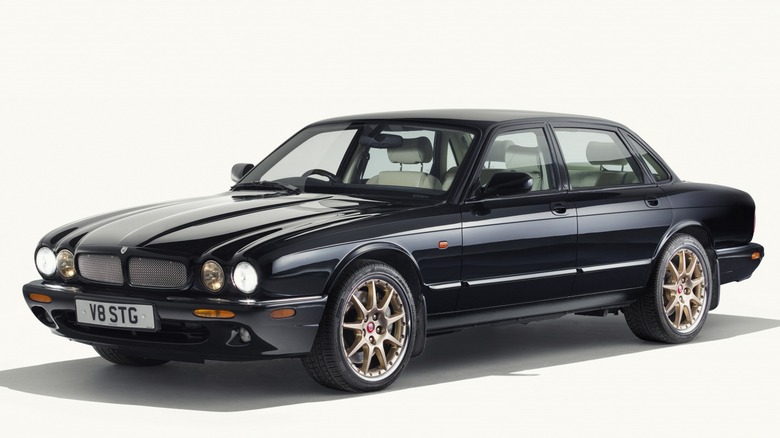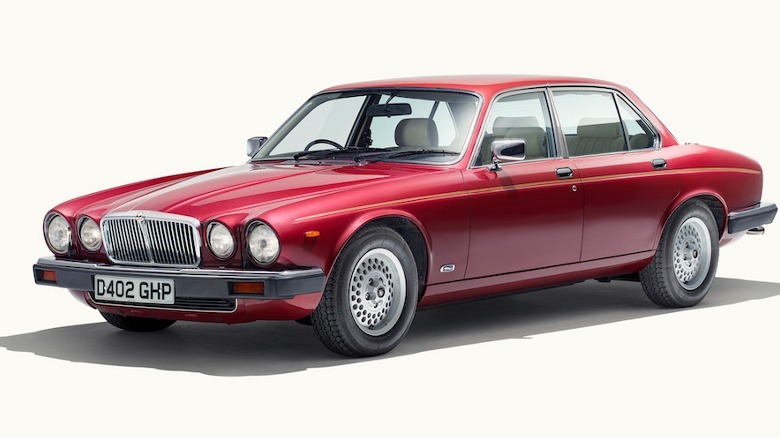Ranking Every Jaguar XJ Generation From Best To Worst
The Jaguar XJ is a core part of the British automaker's identity, as important as the XK120 and E-Type. Because while those sports cars are a part of that identity, so are luxury sedans, and none has been more prolific than the XJ.
For just over 50 years, the XJ was Jaguar's flagship sedan—the most prestigious and luxurious model in the automaker's lineup. The first-generation XJ Series I was quite forward-thinking when it was introduced in 1968, but Jaguar shied away from innovation with later models. That changed with the final X351 generation, but Jaguar scrapped plans for an electric follow-up and ended XJ production in 2019.
With no XJ successor expected anytime soon, we can now look back on the complete history of Jaguar's flagship. We've ranked all eight XJ generations from best to worst.
Iconic curves separated by three decades
It's hard to argue with the original. Later generations had better performance and fancier interiors, but the Jaguar XJ Series I (1968-1973) set the tone for all of them. Jaguar founder Sir William Lyons used the XJ to replace Jaguar's previous sedan lineup. And while it borrowed some styling elements from the previous Mark X and 420, such as quad headlights, the XJ was much sleeker.
The first XJ was powered by the same 4.2-liter dual-overhead-cam inline-six used in the E-Type, making 246 horsepower. Jaguar claimed a sub-nine-second zero to 60 mph time and a top speed of 124 mph. A 5.3-liter V12 (also shared with the E-Type) was introduced, increasing the top speed to 140 mph and making the XJ the fastest four-seat car in the world at the time.
The X350/X356/X358 (2003-2009) meanwhile was the ultimate traditional Jaguar XJ, combining the familiar styling from previous generations with an aluminum monocoque body shell. Tesla would later use aluminum to reduce the weight of the Model S, but at the time only Audi was building luxury sedans using the lightweight metal. Switching to aluminum reduced the weight of the body shell by 40%, according to Jaguar.
Despite the similar styling, the X350 (and X356 and X358 facelifts) was also brawnier than its predecessor. The V8 engine grew to 4.2 liters and 294 hp, while the XJR got a supercharged version making 390 hp. This was the last XJ developed under Ford's ownership. The Blue Oval sold Jaguar to India's Tata Motors in 2008.
Big cats with sharp angles
With the final XJ, Jaguar design boss Ian Callum finally broke with tradition, penning a distinctive new shape that had nothing in common with previous generations, setting the tone for Jaguar models up to the present day.
The interior was updated as well, with a trendy rotary shifter replacing the J-Gate. The X351 brought the XJ up to date in more than just design, though. It also added now-common features like available all-wheel drive, digital instrumentation, and adaptive cruise control.
Powertrains included supercharged 3.0-liter V6 and 5.0-liter V8 engines. An XJR575 performance model arrived late in the production run with a 575-hp version of the V8. Jaguar said at the time that it could do zero to 62 mph in 4.4 seconds and reach a top speed of 186 mph. It was quite the sendoff.
Jaguar dropped the "Series" nomenclature for the fourth-generation XJ (1986-1994), but that was far from the only notable change. Codenamed XJ40, this represented the biggest overhaul of the XJ to date, highlighted by styling that made the XJ40 still recognizable as a Jaguar, but still set it apart as something new and different.
Powertrains got an overhaul too. Jaguar introduced a new all-aluminum 3.6-liter inline-six that made 181 hp at launch, and was backed by a four-speed automatic transmission that was the first to use Jag's J-Gate shifter. Output later increased to 195 hp and then 223 hp with a 4.0-liter six-cylinder engine, but the XJ40 wasn't available with a V12 until 1993. Jaguar sold the previous-generation XJ Series III with a V12 alongside six-cylinder XJ40 models until that point.
Regulations and unsuitable owners
The X300 (1994-1997) was the first XJ developed under Ford, which bought Jaguar in 1989. In what would become a theme of Ford's reign, some of the styling updates from the XJ40 were dialed back, giving the X300 an appearance closer to the old Series models. However, the X300 brought some significant changes on the performance front.
The inline-six and V12 engines returned, but Jaguar also introduced a sportier XJR model powered by a supercharged 4.0-liter inline-six making 322 hp (more than the contemporary V12) and enabling a 155-mph top speed. The XJR would stick around through the following generations, and Jaguar's love affair with supercharged engines would continue as well.
The Series II (1973-1979) was essentially a facelift of the Series I model, so it's one of the less-significant XJ generations. As with most cars in the mid-1970s, Jaguar needed to make some changes to meet stricter U.S. safety regulations. The XJ got bigger bumpers that also forced the grille to shrink. Jaguar updated the interior as well, switching to fiber-optic dashboard lighting and adding power locks and windows. A long-wheelbase version and a stylish coupe called the XJ-C arrived partway through the production run as well.
Subtle styling and slackening momentum
The follow-up to the X300 looked the same on the outside, but there was a big change under the hood. The X308 XJ was the first with a V8 engine. An aluminum 4.0-liter V8 from the XK8 sports car replaced the six-cylinder and twelve-cylinder engines, producing 290 hp in base form. The XJR got a supercharged version making 390 hp. This was a major update (the XJ would retain V8 engines for the rest of its run), but nothing else about the X308 is as memorable.
The Series III (1979-1992) was when the XJ really started to lose momentum. It was styled by famed Italian design firm Pininfarina, famous for its work with Ferrari, but still looked like previous generations of XJ. The inline-six engine was down to 176 hp, and the V12 was gone. Jaguar did at least introduce a more luxurious Vanden Plas model for the U.S., which would become a fixture in a XJ lineup until the early 2000s, and brought the V12 back in 1981. The Series III was also long-lived, overlapping with the XJ40 model that was meant to replace it.
